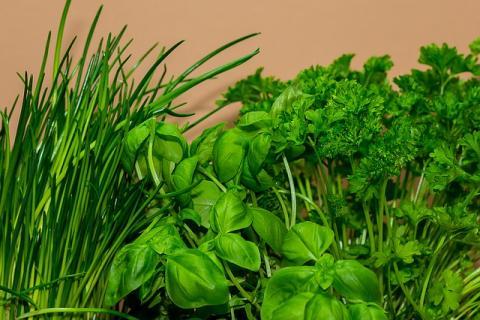
Ever think about how we would get nutrients if we were unable to purchase containers of encapsulated vitamins? Well, from our gardens of course! Before vitamin capsules even existed, we gained our nutrients naturally from fruits, veggies, and herbs grown in the garden. Today, there are gardens that are specifically grown to yield plants just for the sole purpose of providing nutrients for the body. These are called vitamin gardens or “vitamin patches.” They are often better, cheaper, and more sustainable than buying conventional vitamins from the store. Although it is okay to take supplements and vitamins, you should never go overboard. For those who are growing or are planning to grow this type of garden, not just any plant will do. You are going to need vegetation that is rich with vitamins and minerals. Here are 12 vital plants you will want to grow in your vitamin garden.
1. Spinach
Spinach is a must for your vitamin garden! It is an excellent source of vitamins A, C and K. Because it is a leafy green it also contains folate, iron, fiber, magnesium, and calcium. The plant usually grows rather quickly, and can be planted in most places all-year-round.
2. Basil
Basil is an awesome herb, full of nutrients such as iron, calcium, manganese, magnesium, vitamin C, vitamin K and potassium. Along with having a lot of nutrients, basil is great for adding flavor to foods, and it has many medicinal purposes as well. Basil is easy to sow from seed and is relatively fast to germinate.
3. Cucumber
Cucumber is known for being high in vitamin K, vitamin C, and vitamin B1. It also has a good amount of copper, potassium, manganese, phosphorus, magnesium, and biotin. Although most cucumbers prefer full sun, they can be grown in full morning sun.
4. Beets
Beets are a very good source of vitamin C and Vitamin B6. In addition, they contain folate, manganese, potassium, copper, magnesium, iron, and phosphorus. Beets are the most beneficial when eaten raw, juiced or lightly cooked. This root vegetable grows best when planted in full sun or partial shade in warmer regions with loose soil.
5. Kale
Kale is amazing! It is high in vitamins C and K, as well as calcium. It is a good source of beta carotene, lutein and zeaxanthin, which are carotenoids. Carotenoids are said to assist in decreasing the risk of diseases such as eye disease or certain cancers. Kale is simple to grow, and it can continue growing throughout most areas during all seasons if the temperature is above 20 degrees Fahrenheit.
6. Garlic
Garlic provides a great source of vitamins B1, B6 and C. It contains manganese, copper, selenium, phosphorus, and calcium. When planting, it requires a well-prepared planting site, plenty of organic matter, and nutrient-rich soil.
7. Blueberries
Blueberries taste way better than a vitamin capsule, and they are good for you! Not only are they high in antioxidants, but they are an excellent source of vitamin C, vitamin E, and manganese. They are considered one of the easiest fruits to grow because they can grow in a small space.
8. Potatoes
Potatoes with their skin contain vitamins B6 and vitamin C. They are well known for their high amounts of potassium, which is great for helping the kidneys excrete excess sodium. Potatoes also have trace amounts of thiamin, riboflavin, folate, niacin, magnesium, phosphorus, iron, and zinc. When growing these underground veggies, choose a sunny spot with good drainage and loose soil, because this will help out the roots and tubers.
9. Peas
Please plant peas! These powerful veggies are a very good source of vitamins C, K, B1, B2, B6, and protein. They are also high in manganese, dietary fiber, copper, phosphorus, folate, niacin, molybdenum, zinc, protein, magnesium, iron, potassium, and choline. Now if you ask me, that’s a lot of nutrients. Peas require very little attention, aside from regular harvesting and watering.
10. Romaine Lettuce
Considered the most nutritious of lettuces, romaine lettuce delivers more folate, potassium, beta carotene and lutein than any of the other lettuces. It is high in vitamins A, B, C and K. A good thing to keep in mind when growing lettuce is that it has a shallow root system and requires moist soil.
11. Broccoli
Broccoli is rich in vitamins C and K, folate and other B vitamins. It contains provitamin A carotenoid, which the body converts to retinol, a bioavailable form of vitamin A. There are many kinds of broccoli to choose from. The best time to grow this green is during the cooler seasons of spring or fall.
Although these are some of the best options for a vitamin garden, there are many other great varieties of fruits, veggies, and herbs you could choose to grow. A wonderful aspect about most of these plants is that they can be grown indoors or outdoors. To get the most benefits out of your vitamin garden, it is recommended that you use organic practices when growing, and try to avoid using any highly-toxic chemicals.
Stay tuned for more organic home gardening tips and ideas!








